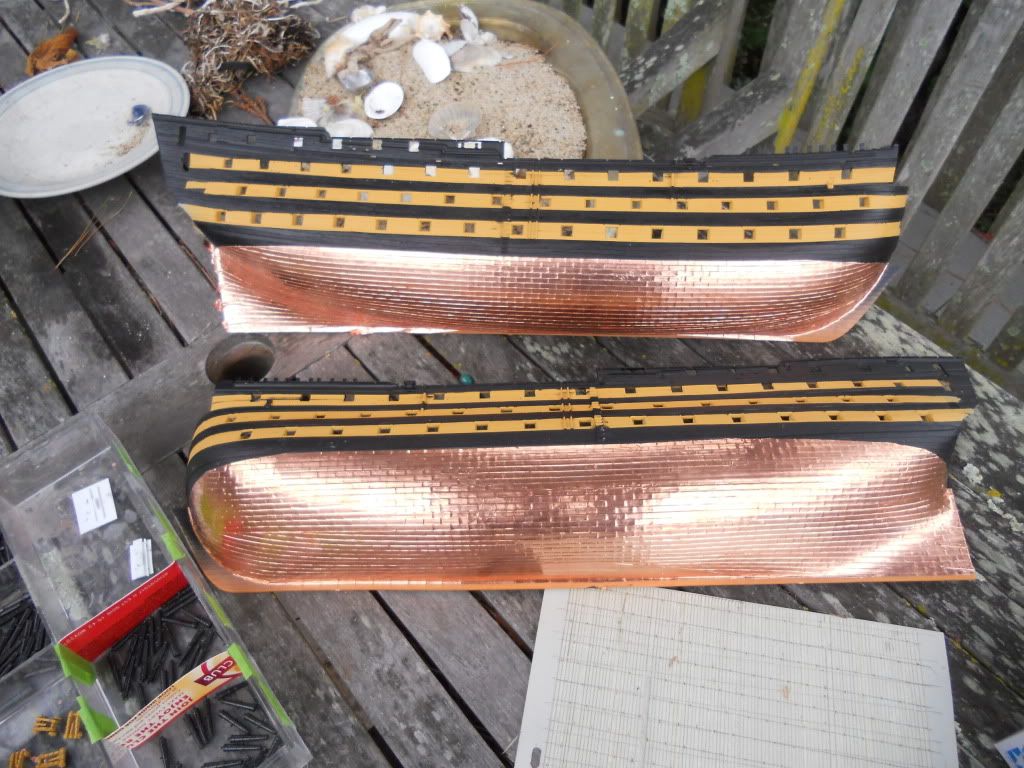Copper tape, which is self adhesive, comes in a pretty wide variety of widths. It's important to get the width you need, scaled off the model molded plates. Even then of course there's some variety at the ends and other areas where the plates change shape.
I also suspect it has some kind of a coating on it, the hulls I've done stay pretty bright, and don't discolor from the oils and acids in my fingerprints. Which coating would make it darn difficult to patina.
I get mine from here;
http://www.anythinginstainedglass.com/metals/foil.html
I don't make stained glass, just one more thing to not be good at.

Five years later this ship looks pleasantly a little more darker and softer. I'll get her out and take some photos. But it's a pretty dramatic look, a personal choice.
I'm of the opinion that being able to weather a model is a sign of advanced skills. But I'm not sure about bottoms. That Constitution of Scott's looks good to me, like an antique.
But my usual concern is that the ship's bottoms I've seen when fresh from the sea, look, and smell; pretty bad.
Maybe ten years ago I was involved in a project where the architects clad an emormous museum in San Francisco with over 250,000 square feet of copper alloy panels. The Board Director was very proud of the design, it was a masterpiece (by others), and showed many renderings of the building, looking much like my Victory there.
Now, I spent a year of my architectural degree study in Copenhagen and took a few classes on the subject of copper roofs. So I pointed out to him that his building would have a very graceful and changing life, going to brown, black and eventually green. He became really indignant with me, so I used the Tilley test and pulled a handful of pennies out of my pocket (I'm an architect) and spread them out. He was quite taken aback, but also amused.
Scott, those are very beautiful models. I really like the frigate esp.